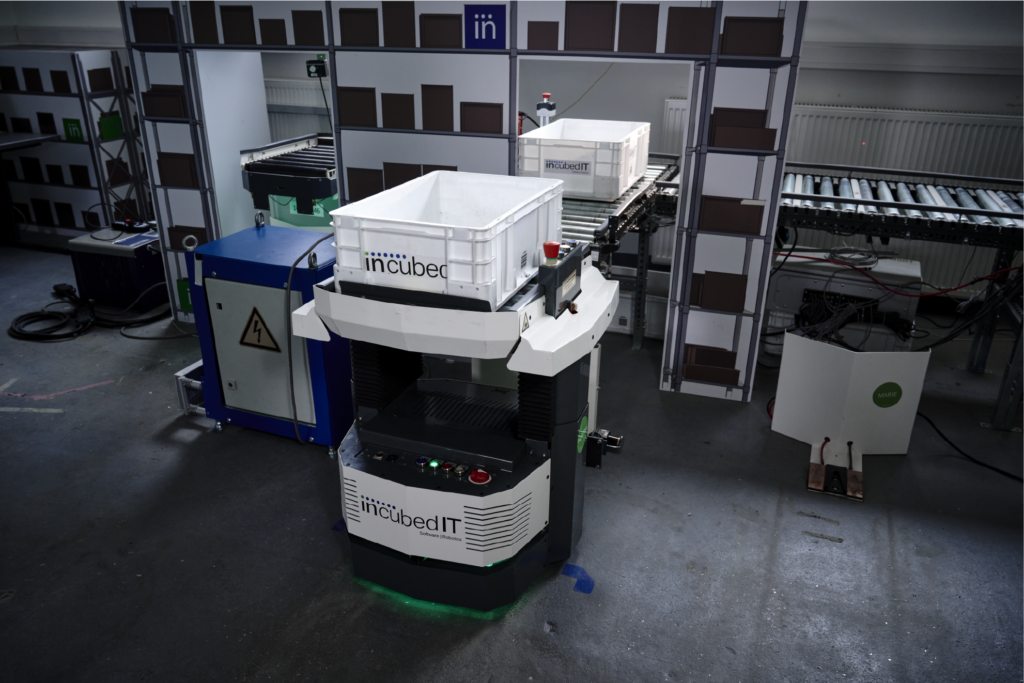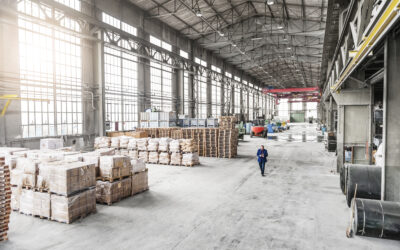Order picking: How mobile robotics can speed up online orders

We’ve all been there: you log onto your favorite online store and impulsively order something — clothing, a game, food — that you may or may not regret when you receive the package in the next few days. But don’t you wonder how you’re able to get such a random assortment of items so quickly?
There are a lot of factors that play into the complex logistics of online ordering and delivery. But what you may not realize is that mobile robotics often play a huge part in this process.
What kind of robots help with online orders?
Autonomous Mobile Robots (AMRs) are robots that use sensors, artificial intelligence, and software — like that offered by incubed IT, a Verizon company — to intelligently move around and avoid obstacles without needing a person to oversee them. They can be used for many different jobs: carrying containers, inspecting facilities, moving pallets, scanning labels, and much more. One of these applications is assisting with picking orders in a timely manner so people receive their packages quickly.
According to Timothy Christianson, Principal Solutions Architect at Verizon Robotics, a typical human picks 50 items per hour with the top pickers picking around 80-100 per hour. He has observed that a fully-automated AMR picking solution can complete up to two times that rate. And he has seen hybrid goods-to-person (GTP) systems that can augment workers for rates up to 500–600 pieces per hour.
AMRs are very helpful in the realm of online orders. Today, in order to streamline order fulfillment processes, companies can rely on AMRs to assist human pickers. This is essential to increasing global retail sales volumes and same-day deliveries.
Why are AMRs important in order picking?

To delve deeper into just how helpful AMRs can be in order picking, let’s look at a study from the European Journal of Operational Research about order batching and batch sequencing in an AMR-assisted picker-to-parts system.
According to the study, order picking is laborious and expensive for warehouse operations, taking up to 65% of total warehouse operating costs. Being late on deliveries results in customer dissatisfaction and increased labor costs for the warehouse. Order picking is therefore crucial for the competitiveness of a supply chain.
The study estimates that 80% of all order picking systems in Western Europe follow the traditional picker-to-parts setup, where people walk around the facility to pick up the items for an order. This walking time accounts for 50% and more of total order picking time.
The team studied a warehouse divided into zones, each with one human order picker and several AMRs assigned to it. Each zone was given a set of customer orders with due dates for when they need to be collected. The worker brought customer orders to the picking area, and AMRs were responsible for transporting batches of orders from the picking area to the depot.
The study found a series of advantages to AMR-assisted order picking:
- It reduces the amount of walking a worker must do and increases the amount of orders completed. With the addition of AMRs, order pickers are able to continue picking out items for orders without needing to leave and deposit items elsewhere. AMRs are able to save time by taking on the delivery part of the worker’s job. With the use of AMRs, a reduction of about 20% of travel distance can be achieved, meaning that more orders can be completed in less time.
- It’s relatively easy to implement an AMR-assisted order picking system into existing warehouse operations without the need for heavy changes. Compared to other solutions, which can be infrastructure-intensive, AMRs often require little change to existing environments. (And with the incubed IT software solution for AMRs, we can help you set up and optimize AMR operations in your facility.)
- AMRs used in warehouses and industrial facilities are highly reliable. Even if one AMR stops working, the other AMRs are not affected and can intelligently route around it as they continue their work.
- AMRs are highly flexible compared to other systems such as conveyors. If a business needs to redesign their facility’s floor layout, AMRs can quickly adapt to the new changes and carry on with their jobs.
- While AMRs can be optimal for order-picking, they may also be able to carry out other tasks around the facility, and can be automatically reassigned to other tasks as demand shifts throughout a workday.
Order-picking is an important job that affects millions of people’s lives every day, and AMRs are an important aspect of this industry. If your business is looking into AMRs for your facility, contact us at [email protected] to ask questions or set up a demo.
